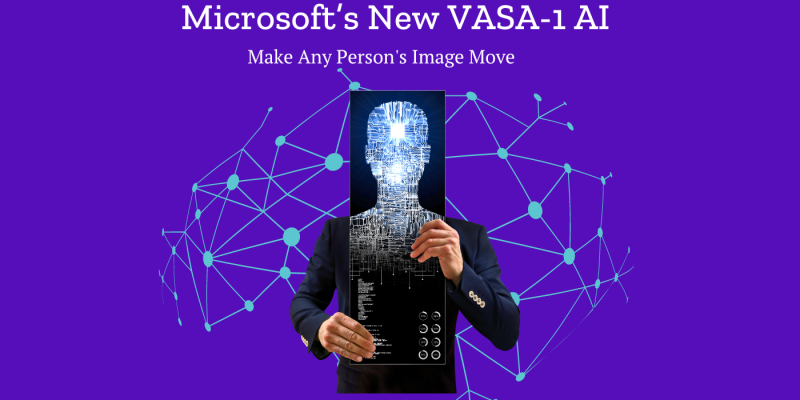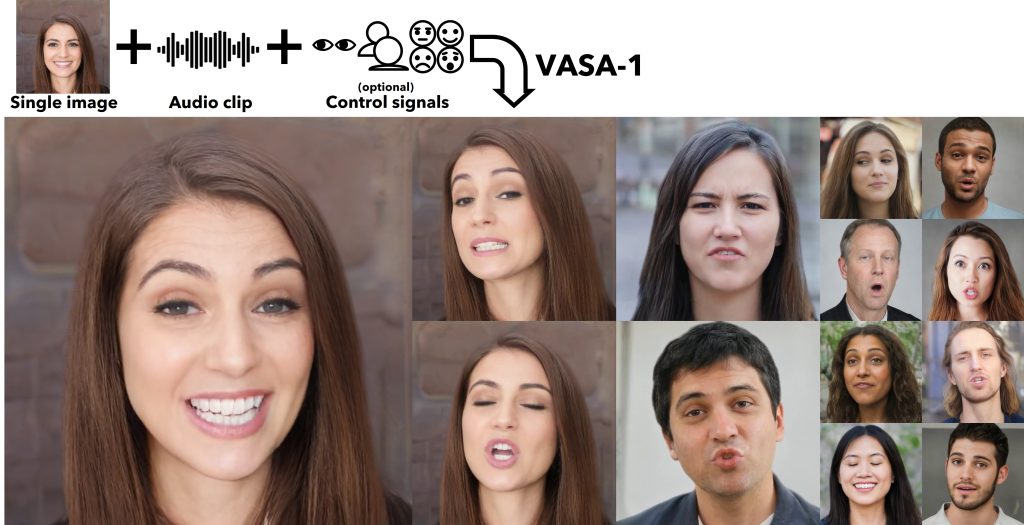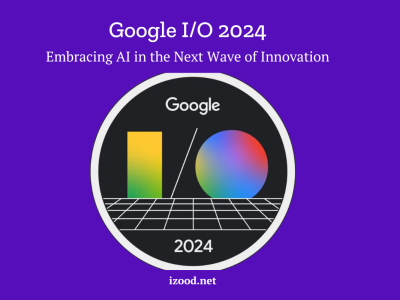
Microsoft’s VASA-1 technology marks a groundbreaking advancement in the field of artificial intelligence by transforming static images and audio clips into dynamic video simulations. This guide explores the intricacies of how VASA-1 operates, examining its innovative approach to generating lifelike videos, the potential applications it opens up across various industries, and the ethical considerations it raises. Through understanding VASA-1’s capabilities and implications, we can appreciate both the technological marvel it represents and the broader impacts it may have on digital media and communication. This guide delves into how VASA-1 operates, its potential applications, ethical considerations, and the technological foundation behind its capabilities.
What is VASA-1?
VASA-1 is an advanced AI system developed by Microsoft that can generate realistic video footage of a person speaking from just a single photo and an accompanying audio clip. This system uses deep learning models to animate the photo so that it matches the timing and modulation of the audio.
- Image and Audio Input: VASA-1 requires a single photograph and a voice recording. The photo serves as the base for the video, and the audio clip provides the spoken content.
- Facial Animation: The system analyzes the audio to determine the corresponding mouth movements. It then animates the photo’s face to match these movements, creating the illusion that the person in the photo is speaking.
- Emotion and Expression Sync: Beyond mere lip-syncing, VASA-1 also adjusts the facial expressions of the photo to reflect the emotional tone of the audio, enhancing the realism of the video.
- Output: The end product is a video, typically rendered at 512×512 pixels resolution, running at 45 frames per second, which showcases the photo’s subject speaking as if captured on video.

Applications of VASA-1
- Entertainment and Media: Creating realistic avatars for movies or video games.
- Education: Generating instructional videos using images of historical figures or authors.
- Virtual Assistants: Enhancing the interactivity of AI assistants with realistic face animations.
- Corporate Training: Producing training materials with company representatives without needing their physical presence.
Ethical Considerations
- Misuse Potential: There’s a significant concern about the potential misuse of such technology for creating deepfakes which could misrepresent individuals in harmful ways.
- Privacy Concerns: Using someone’s photos and voices without consent could lead to privacy violations.
- Regulation and Control: Microsoft has limited the availability of VASA-1 due to these risks, not offering the system for broad public use.
Technological Foundations
VASA-1 is built on a foundation of machine learning algorithms that include:
- Neural Networks: For recognizing and generating facial expressions that match the spoken words.
- Computer Vision: To accurately map and animate facial features from static images.
- Audio Processing: Algorithms that break down audio into phonetic components which guide the animation of the mouth and face.
Future Prospects of VASA-1
The future of Microsoft’s VASA-1 is marked by potential advancements that could broaden its application and enhance its realism and ethical safeguards:
- Higher Resolution and Frame Rate: Future iterations of VASA-1 could produce videos in higher resolutions than the current 512×512 pixels, and at a higher frame rate, making the animations even more lifelike. Improvements in hardware and optimization of algorithms may allow real-time processing that could be integrated into live applications.
- Improved Security Measures: To counteract potential misuse, future versions of VASA-1 might incorporate more robust security features, such as watermarking or digital signatures to verify the authenticity of videos and detect tampered content.
- Enhanced Expression Accuracy: Continuing advancements in AI and machine learning could lead to more accurate capture of subtle facial expressions and better emotion detection, allowing VASA-1 to produce videos that reflect complex human emotions more accurately.
- Interactive Applications: VASA-1 could be adapted for real-time interactive systems, such as virtual reality (VR) and augmented reality (AR) platforms, where users can interact with AI-generated avatars in a virtual space, enhancing user experience in education, training, and entertainment.
- Ethical Framework Development: As the technology evolves, so too will the ethical frameworks governing its use. This involves collaboration with policymakers, ethicists, and technologists to ensure that deployments of such technology are done in a responsible and controlled manner to minimize harm and protect individual privacy.
- Broader Accessibility for Creative Industries: With advancements in ease of use and reduced costs, creative professionals across various sectors such as film-making, gaming, and digital art could harness VASA-1 to create rich, immersive content more efficiently.
Conclusion
Microsoft’s VASA-1 is a pioneering example of how AI can bridge the gap between static images and dynamic video content. As this technology evolves, it holds the potential to revolutionize various industries, although it must be handled with care to mitigate risks associated with deepfake technology. For more detailed insights into VASA-1 and its implications, following continuous updates and discussions from reliable tech news platforms is advisable. This ensures staying informed about both the advancements and the ethical debates surrounding such innovative technologies.

![How to Pause Location on Find My iPhone Without Them Knowing? [2024] 18 how to pause location on find my iphone](https://izood.net/wp-content/uploads/2024/10/How-to-Pause-Location-on-Find-My-iPhone-Without-Them-Knowing-400x300.png)





